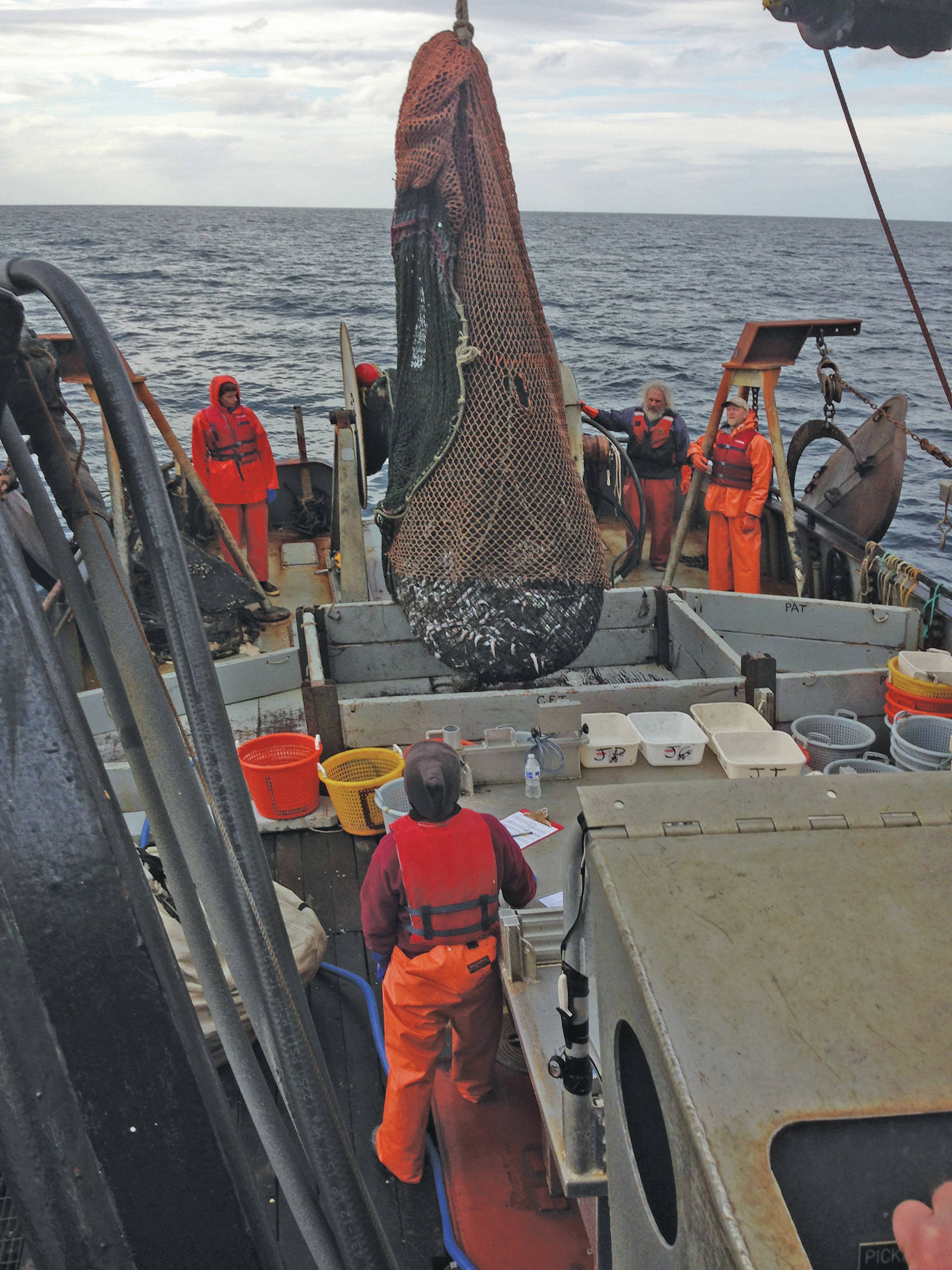The 2019-20 sport and subsistence Tanner crab fisheries in Cook Inlet and the North Gulf Coast opens Oct. 1 with increased harvest opportunities, the Alaska Department of Fish and Game announced in a press release last month.
Permit registration started Sept. 4, with the season running Oct. 1-Dec. 31 and Jan. 15-March 15, 2020.
In Kachemak Bay east of a line from Point Pogibshi to Anchor Point, there will be more harvest opportunity than in other areas. Crabbers are allowed two pots per person and a maximum of two pots per boat, with a bag and possession limit of five legal-sized male Tanner crabs per person.
That’s up from one pot per person and a bag and possession limit of three crabs from last season, said Fish and Game sport fish area management biologist Mike Booz. The increase is based on trawl survey data which showed the fishery can support more harvest. To keep the harvest sustainable, biologists seek a target of less than 10% of of the 3-year average legal male abundance.
The trawl surveys were done in 40 stations using consistent methods done since 1990 throughout Alaska, said Jan Rumble, area Fish and Game commercial fisheries biologist. The legal size limit for male crabs is the same as for 2018, when scientists developed new criteria for determining crab maturity based on their terminal molt conditions — when the crabs had grown enough that they would not molt or shed their shells.
The goal is based on what Rumble called the three S’s:
• Size, to allow male crabs to mate at least once in their lifetimes;
• Sex, limiting the harvest only to male crabs, and;
• Season, limiting the harvest outside when crabs molt from March to June and mate in late summer.
Biologists suspect the increased Tanner crab population is due to a drop in the Pacific cod population, the main predator of Tanner crabs. Pacific cod stocks declined 77% in 2017.
“There’s another shift in the environment,” Rumble said.
“There’s a lack of stability in the North Pacific Ocean,” Booz added.
Sea otters, the primary predator of Dungeness crabs, do not prey as much on Tanner crabs because Tanners mostly live too deep for otters to dive. Sea otters target crabs that live in shallower waters.
To participate in the Tanner crab fishery, people must register online to get permits in either the sport or subsistence fisheries. There’s no advantage other than for cultural reasons to participate in the subsistence fishery, and ADF&G encourages people to register in only one fishery. Crabbers in the sport fishery must have a current sport fish license.
To register, visit https://www.adfg.alaska.gov/Store. People who don’t have computer access can register at the Homer ADF&G office at 3298 Douglas Place off Ocean Drive.
Crab fishermen also have to file harvest reports at the end of the season, even if they did not participate. About 16% of permit holders who fished in the last season failed to file harvest reports or file appeals. Letters were sent out to all permit holders advising them of report and appeal deadlines.
Those who did not file reports were put on the “fail to report” list and won’t be able to register until the 2020-21 season. Harvest data helps biologists determine seasonal harvest limits.
“We really need accurate information,” Rumble said.
Tanner crab fishermen must have a signed copy of their permit with them when fishing, and must report the harvest in ink on the permit before the catch is concealed. The online permit includes maps and other fishing regulations.
The two-week closure in early January is a relic of commercial fishing regulations that set that time for a commercial crab fishing season. Crab stocks have yet to recover and aren’t likely to recover enough to allow a commercial season.
Reach Michael Armstrong at marmstrong@homernews.com.


